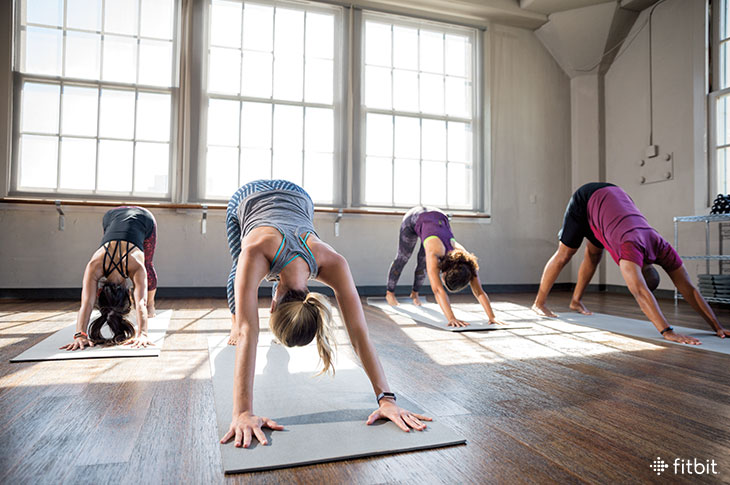 Social support can help you reach almost any goal. Of course, having real-life friends who encourage you to eat healthfully, work out with you, and hold you accountable, are great. But in this new age of technology, is it possible to derive these same benefits from a convenient virtual community? Recent research in the journal Nature Communications is starting to hint that perhaps you can.
Social support can help you reach almost any goal. Of course, having real-life friends who encourage you to eat healthfully, work out with you, and hold you accountable, are great. But in this new age of technology, is it possible to derive these same benefits from a convenient virtual community? Recent research in the journal Nature Communications is starting to hint that perhaps you can.
Healthy Habits Can Be Virtually Contagious
The scientific evidence for social contagion, also known as homophily, has been around for a long while. However, it’s sort of hard to tease out why exactly certain behaviors seem contagious among groups. Do the habits of your friends influence you, or do similar people simply hang out together and share in similar activities?
The most recent study wanted to test the idea of real contagion in a virtual community. The researchers tracked data across a global virtual community. Each member of the community wears a fitness tracker, which uploads real-time objective stats on workouts. At the same time, they also “make friends” virtually with others who share in similar fitness interests and activities.
For five years, the team grabbed global data from roughly 1.1 million men and women, who ran 225 million miles over the course of the study. Based on their uploads, they were able to track how fast and how far each runner moved each day, as well as how fast and how far their virtual running buddies went.
Virtual Competition Can Be Really Motivating
Despite physical separation, those fitness pals did tend to run similar lengths on similar schedules. But was it because they were similarly-minded, or because they were actually influencing each other?
The researchers also monitored weather for those five years, thinking rain, snow, sleet and inclement temperatures might spur some runners to sit out a day. With weather accounted for, the runners still seemed to influence each other. For instance, if one runner went 10 minutes farther than usual, their virtual buddies tended to lengthen their program by a few minutes, too.
The runners also seemed more motivated if weaker runner-friends were strengthening their skills; the scientists think that the (perhaps subconscious) fear of being bested by a once-inferior virtual pal was enough motivation for the better runner to go a bit harder.
This research on the effect of virtual communities certainly seems promising. Friends do impact us in a number of ways, says David Cavallo, PhD, MPH, RDN, an assistant professor in Case Western Reserve University School of Medicine’s Department of Nutrition. “Sometimes, people are attracted to others like them, so they engage in similar activities,” he explains. “Another element is social support. They may do the activities themselves and provide companion support, like a workout buddy; they might give you instrumental support, like helping with a ride to the gym; or they could give emotional support and encouragement for you to reach your goals.
Tech Communities Can Be Very Supportive
Tech-based friends who have similar profiles might also give you a boost of motivation that’s slightly different, but still important. “There’s something called behavioral modeling; you tend to do things that you see others doing,” Cavallo explains. “You might see someone who is similar to you achieving a goal, and you gain more confidence that you can do it, as well.” Obviously, real-life pals can also lend this kind of support, but the convenience of virtual communities is a great tool in the digital age.
But is virtual support as effective? Although more research needs to be conducted, Cavallo, who’s actively working on similar studies of virtual communities, is hopeful. “There’s extensive research on how social support can help improve diet and physical activity. I do think seeking out people who would support you would be helpful. Connecting digitally theoretically should have a positive impact—and the advantage to the online structure is convenience. Digital support systems are easy to tap into.”
This information is for educational purposes only and is not intended as a substitute for medical diagnosis or treatment. You should not use this information to diagnose or treat a health problem or condition. Always check with your doctor before changing your diet, altering your sleep habits, taking supplements, or starting a new fitness routine.

I weighed in at 295 and had to have a scope done on my stomach and they had found two in my esophagus and 3/4 of my stomach was covered with Hurnia’s so I only take in 1/2 cup of food each meal. And if I get hungry I snack on protein yogurt or peanut butter and rice cakes. I’ve lost 156 pounds in 11 months. And I excercise at the gym where I live. And I get a lot of excercise at home also.